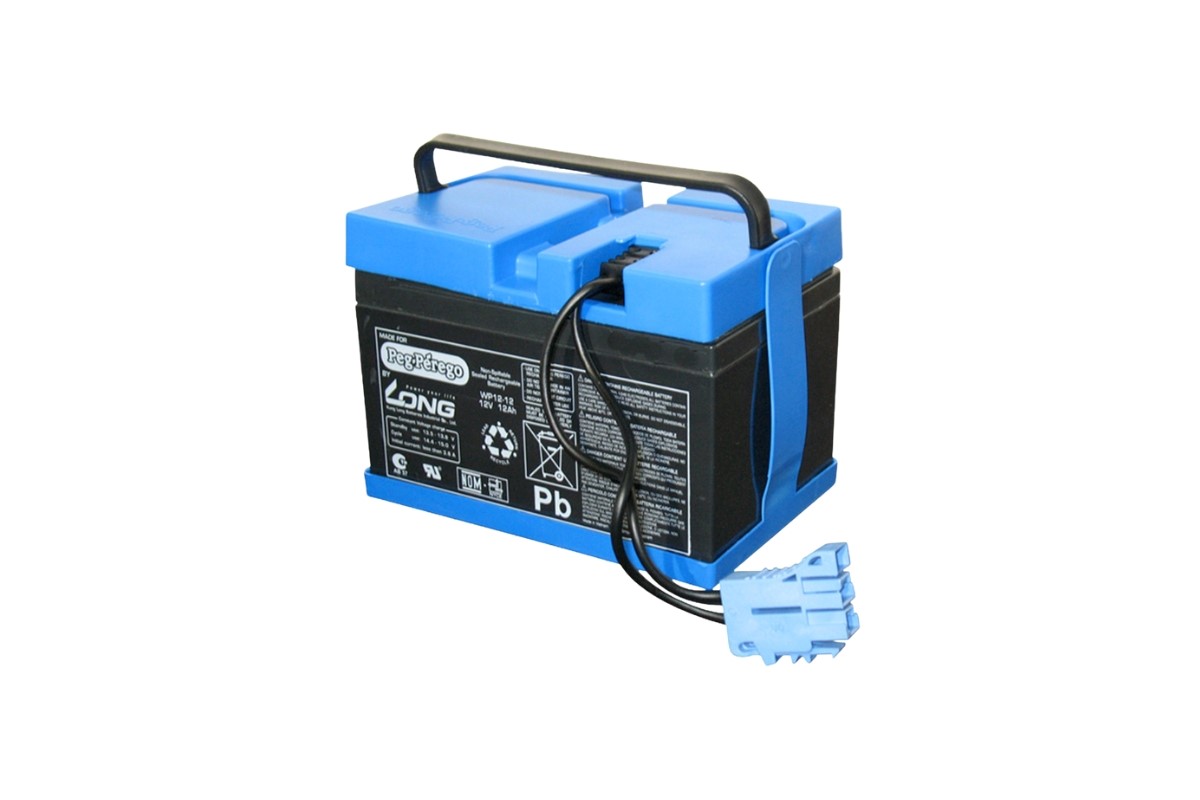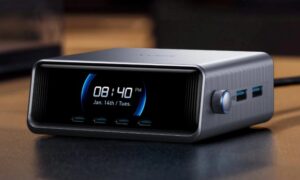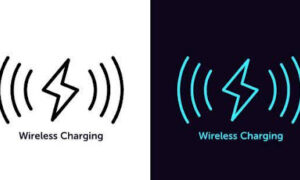Your Peg Perego ride-on was fully charged yesterday. Now, it’s barely crawling. The battery dies way too fast. It’s frustrating when your kid’s favorite toy keeps stopping after just a short ride. You’re left guessing what’s wrong or if it’s time to replace the battery again.
Most Peg Perego batteries last 45 minutes to 2 hours per charge and up to 1 to 3 years total lifespan. That depends on how often it’s used, how it’s charged, and how it’s stored between uses. Small changes in charging and storage can keep the battery running stronger for a longer time.
In this post, you’ll learn how long a Peg Perego battery lasts and what affects its lifespan. You’ll also get practical tips to charge, store, and care for it so your ride-on stays reliable.
Types of Peg Perego Batteries
It’s important to know which Peg Perego replacement battery your ride-on toy uses before choosing a replacement. Ride-on toys come with different voltages: 6V, 12V, or 24V. Voltage affects how fast the toy moves and how much power it delivers. Smaller toys need less voltage. Bigger models use higher voltage to handle more weight and power.
Battery capacity is measured in amp-hours (Ah). It shows how long your toy runs on a single charge. Common ratings include 8Ah, 12Ah, and 15Ah. A higher Ah rating means longer playtime between charges and fewer interruptions.
Here are common Peg Perego battery types:
- 6V 4.5Ah sealed lead acid: fits toddler toys like the Mini Ducati.
- 6V 8Ah sealed lead acid: used in small tractors and electric quads.
- 12V 8Ah sealed lead acid: found in models like the John Deere Gator HPX.
- 12V 12Ah sealed lead acid: supports toys like the Polaris Outlaw.
- 12V 15Ah sealed lead acid: ideal for larger models like Gaucho SuperPower.
- 24V lithium-ion: powers high-performance toys such as the Corral T-Rex.
How Long Does a Fully Charged Battery Last?
A fully charged Peg Perego battery typically lasts between 40 minutes and 2.5 hours per charge. That depends on its voltage and amp-hour capacity. More capacity generally equals longer playtime, but still varies in real use.
Here are some runtimes by battery type:
- 6 V, 4.5 – 8 Ah batteries: Usually power small toys for about 40–60 minutes on smooth surfaces.
- 12 V, 8 – 15 Ah batteries: Most common, offering roughly 60–120 minutes, depending on Ah rating and model.
- 24 V lithium batteries: Found in high-performance toys and give about 90–150 minutes of runtime per full charge.
Several factors affect real runtime:
Terrain, surface type, child rider weight, speed, and battery drain from aging. Rough ground or steep hills can reduce runtime by over 30 percent. Heavier riders also drain the battery faster. A well-maintained 12 V 15 Ah battery offers a much longer runtime compared to a 12 V 8 Ah version.
Battery Lifespan: Years and Cycles
A typical sealed lead acid (SLA) Peg Perego battery lasts about 300 to 500 charge cycles. With normal weekend or daily use, that equals around 2 to 3 years of service. These cycles measure full charges and discharges before capacity drops significantly.
Battery life shortens if overcharged, deeply drained, stored in extreme temperatures, or left unused for long periods. Some lithium batteries advertise up to 10,000 cycles, but these claims often refer to shallow cycles and ideal conditions.
Real-world use provides far fewer cycles. Lithium chemistry generally offers a longer lifespan and lighter weight compared to SLA, though it costs more initially.
To maximize life, avoid letting the battery fully drain before charging again. Store batteries at moderate temperatures and recharge them regularly.
What Affects Battery Life?
Battery life depends on four key things: how you charge, ride, store, and choose the right battery.
Poor charging habits shorten battery life. Leaving it plugged in too long can weaken the internal cells over time. Letting the battery fully drain before recharging also reduces its overall lifespan.
Tough riding conditions make batteries work harder. Grass, gravel, and steep slopes force the motor to use more power. Flat sidewalks and smooth driveways reduce battery strain and help it last much longer.
Bad storage conditions cause damage fast. Extreme heat or freezing weather slowly destroys the battery’s ability to hold power. Always store it at room temperature and make sure it gets charged once a month.
Battery quality also matters. OEM Peg Perego batteries last longer than cheap replacements made with lower-quality parts. Lithium batteries often perform better and survive more cycles than sealed lead-acid options.
Signs Your Battery is Dying
Nothing ruins playtime faster than a toy that won’t turn on or shuts off after a few minutes. Parents often think the charger is broken or the toy is faulty, but the real issue is usually the battery. A failing battery gives small warning signs at first, then quickly stops working altogether. Spotting these early symptoms can save you money, time, and a disappointed child.
Shorter Runtime Than Usual
It’s frustrating when your kid is excited to ride, but the battery dies before play even starts. If your Peg Perego used to run for an hour and now stops after 15 or 20 minutes, the battery is fading.
A drop in runtime means it can’t hold as much charge as before. Even if you’re riding on the same ground with the same weight, the battery drains faster. This is one of the earliest and clearest signs that it’s reaching the end of its life.
Slow or Weak Performance
Your ride-on still moves, but now it feels sluggish and struggles to climb small bumps or hills. A weak motor response often means the battery doesn’t have enough strength to push full power.
If speed feels slower even after a full charge, the battery cells may be too worn out. It can’t deliver steady voltage anymore, causing your ride-on to crawl instead of cruise.
Charger Light Behaves Oddly
You expect the charger light to turn green, but it stays red or flashes for hours. Strange charging signals often point to charging errors or a battery that’s not accepting power correctly.
It may charge too fast or never finish charging at all. Sometimes, the charger blinks or clicks, which can mean poor contact or internal failure in the battery.
Battery Swelling or Overheating
You notice the battery case looks bloated or feels hot right after unplugging it. That’s a red flag. Swelling happens when the chemicals inside start to break down and create pressure.
Overheating means the battery is struggling and could be unsafe to use. It’s best to replace the battery right away to protect the toy and prevent any safety issues.
Battery Not Holding Charge Overnight
You charged it fully, but by morning, the power is already gone. That can ruin any planned outing. When a battery drains quickly without even being used, it shows the cells can’t retain energy.
This makes the battery unreliable, and your ride-on won’t stay ready when your child wants to play.
Frequently Asked Questions(FAQs)
If you’re unsure about charging, storage, or upgrades, these common questions can help you avoid mistakes and make smart decisions.
Can I use a higher Ah battery in my Peg Perego ride-on?
Yes, using a higher Ah battery is safe if the voltage stays the same. It won’t damage the toy and will extend runtime, giving your child more riding time between charges without overloading the motor or wiring.
How long does it take to fully charge a Peg Perego battery?
Most Peg Perego batteries take 8 to 12 hours to charge fully. Larger batteries or older ones may take slightly longer. Avoid overcharging by unplugging the charger once the indicator shows it’s complete.
Can I charge a Peg Perego battery with a different charger?
It’s not recommended. Chargers that don’t match the correct voltage or connector can harm the battery and shorten its life. Always match the charger to the battery’s specs and use the original Peg Perego charger when possible.
Should I unplug the battery when not in use?
Yes. Leaving the battery connected can slowly drain its charge and may cause overheating. Unplug the battery after each ride or charging session if the toy won’t be used again within the next day or two.
What happens if I leave the battery outside in cold weather?
Cold weather affects battery chemistry. Freezing temperatures can weaken the battery and make it charge more slowly. It’s best to store Peg Perego batteries indoors at room temperature to prevent permanent damage and a shorter lifespan.
Conclusion
A Peg Perego battery won’t last forever, but how you use and care for it makes a big difference. From choosing the right battery type to spotting signs of failure early, every step helps extend ride time and avoid breakdowns.
A well-timed battery change keeps your ride-on ready and prevents problems from showing up mid-play. Use what you’ve learned here to keep your child’s ride-on running strong and ready whenever playtime begins.
Read More From Techbullion



































